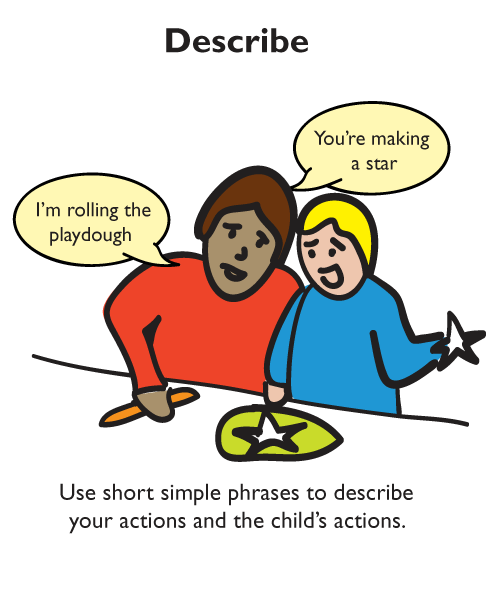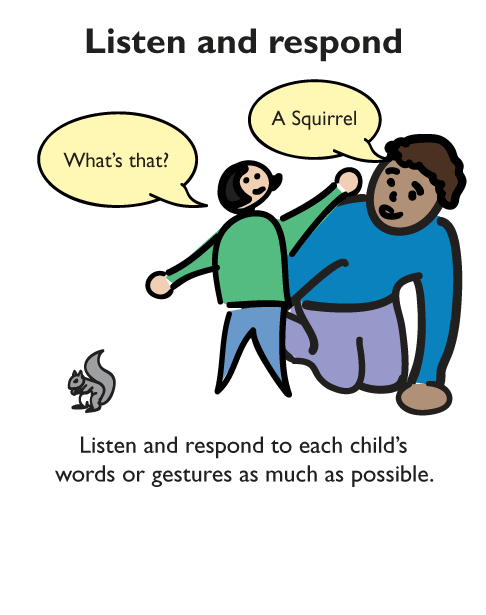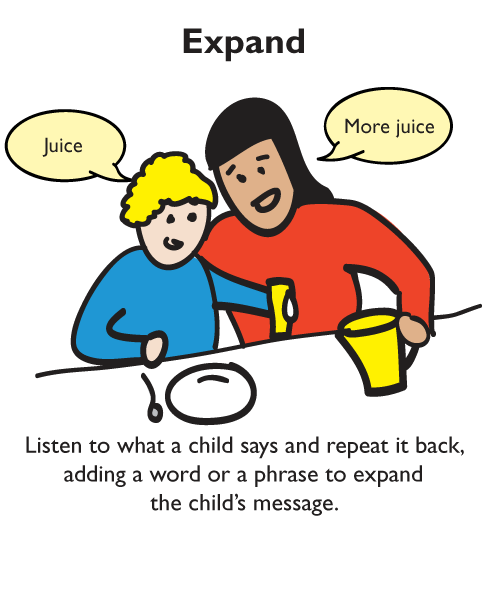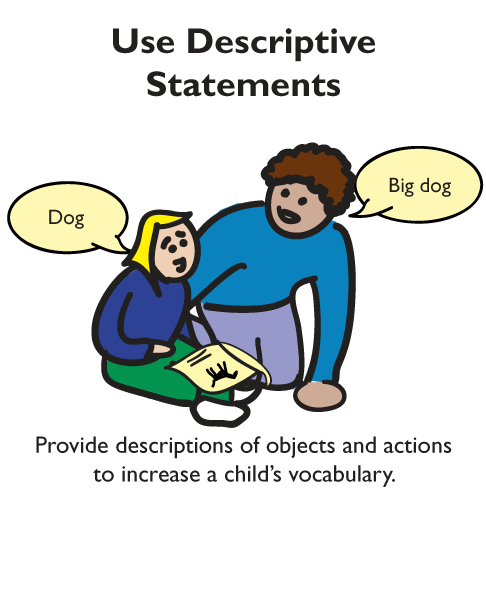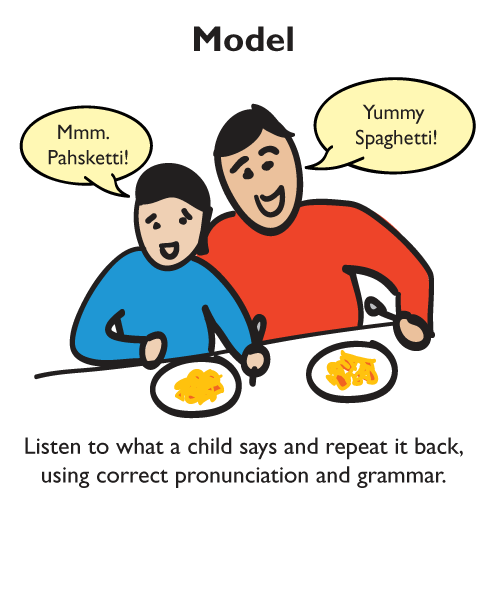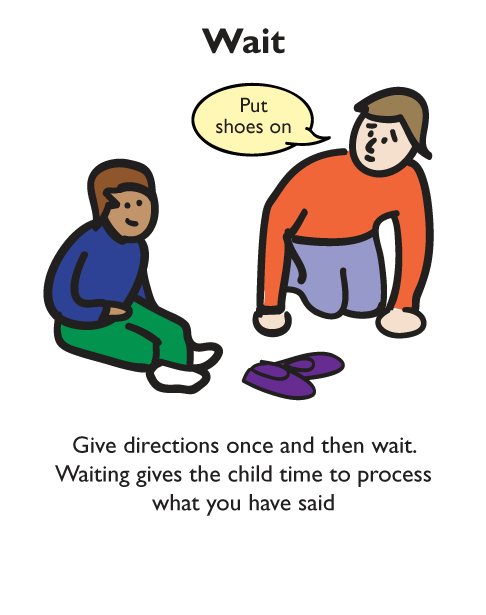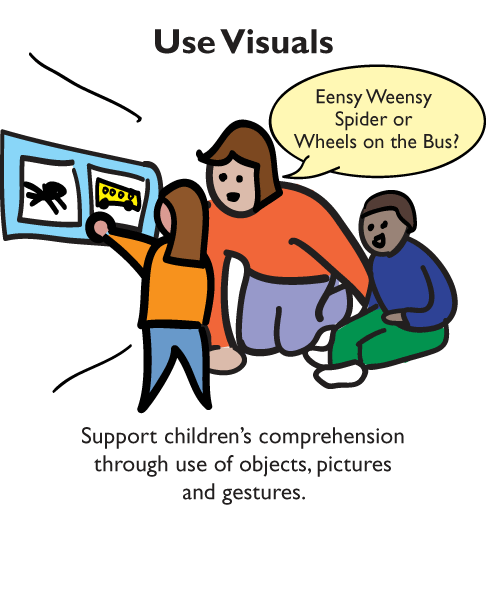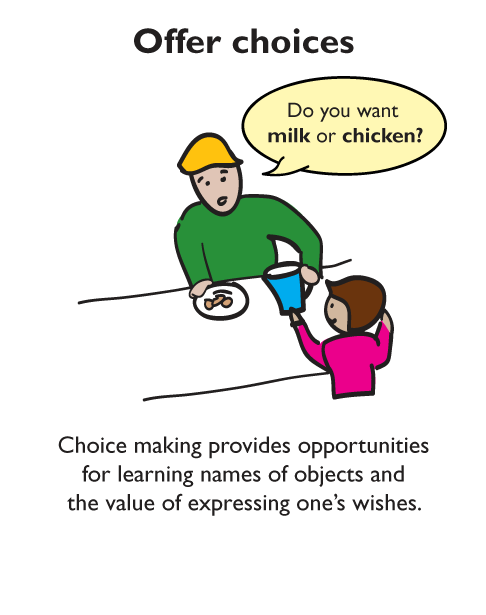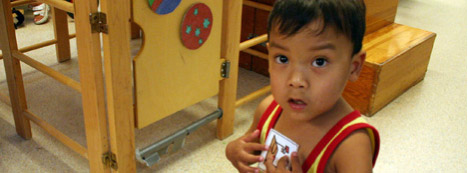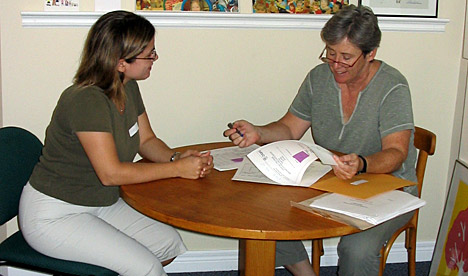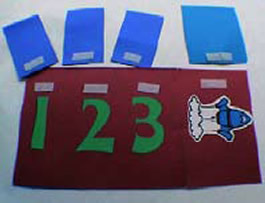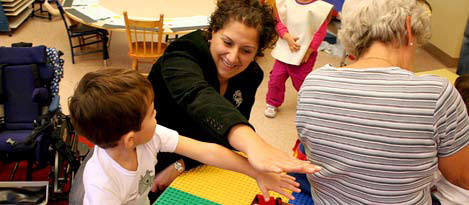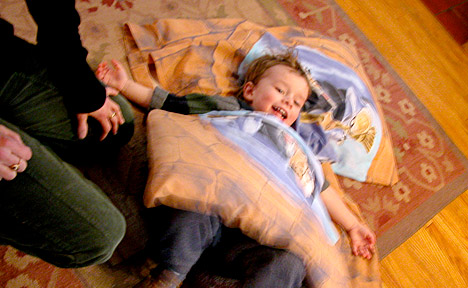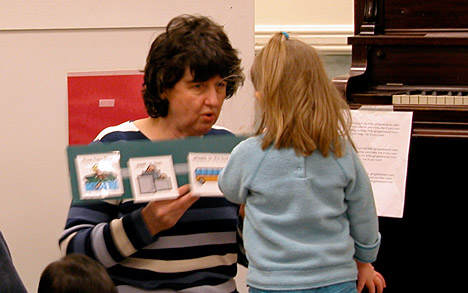
Deciding where to play or what activity to choose can be a difficult task for some children. Sometimes there are just too many activities to choose from and it can be overwhelming for a child. As a parent, teacher or early childhood professional, your job is to teach new skills that will help your child build independence and move forward in their development. You also teach new skills to reduce frustration, promote self-esteem, and to replace behaviour that may not be the most acceptable.
For example, Hamzah has difficulty making choices. After snack time, when asked to choose an activity for play time, Hamzah does not respond and remains seated. Hamzah is using problem behaviour to tell us, “I don’t understand what I’m supposed to do, so I’m not going to do anything”. If you have a child like Hamzah, you too can teach him to make choices and expand his plays skills.
Breaking Down the Task
Though some children quickly learn skills through observing and imitating others, many children need the new skill to be broken down into smaller steps and to be allowed time to master each step in the sequence. The breaking down of complex skills into smaller parts is called task analysis. Anything we do can be broken down into smaller steps.
In our example, we want Hamzah to make a choice between two activities. We can do this by using concrete objects and eventually picture symbols. Let’s begin by breaking down the steps:
When presented with two objects (representing activities found around the room), Hamzah will:
- Look at both objects.
- Reach out and touch one.
- Go to the place where the activity can be found.
- Play with chosen activity.
Teaching the New Skill
Teaching a new skill involves preparation. Start by collecting a few materials including small objects that represent various activities that may be found around around the room. (eg. Small book, wooden block, Lego, toy care, CD, doll, sand shovel, crayon, play dough container, puzzle piece).
You can also pair a picture symbol with a real object by simply sticking it directly onto the object. This will help your child understand that the picture and object mean the same thing and eventually be able to make a choice using picture symbols only. When making visual supports remember that you can use photographs, line drawings, magazine cut-outs, or picture symbols.
In order for your child to learn the steps to a new skill, you will have to provide assistance or “prompt” along the way. A prompt is a cue or hint meant to help your child to perform a desired behaviour, skill, or part of a skill.
Start by offering a choice between two activities. When offering the choices you can say, “Want puzzle or CD?” Remember to go down to your child’s level and keep the language simple so he can understand what you are saying. Hold the object representing his favourite activity much closer to him to provide a positional prompt allowing him to look at the object, reach for it, and make a choice more easily. At first you may need to prompt him to reach out and select the object using hand-over-hand assistance. This will help your child to get familiar with this new routine and understand what is expected of him.
Gradually you’ll provide less assistance as he learns each step. The favourite object will move further away and hand-over-hand assistance to reach for the object will gradually become a tap on the elbow or shoulder, until he can do it independently without any physical support. This process is called fading – it involves gradually reducing the need, strength or level of the prompt.
It is important to follow through with every step of the sequence.
In our example, once Hamzah selects an object we will lead him directly to the activity – making sure that he follows through with the choice and has an opportunity to play. Eventually, we can fade out this support as well by just walking Hamzah to the edge of area where the activity is and letting him find the activity on his own.
Gradually you will move from choice making with real objects and to using picture symbols only. The picture symbols can be posted on a board where your child will be able to choose an activity. Picture symbols and other visual supports are great tools for expanding your child’s communication skills.
Giving Reinforcement
Reinforcement is anything that motivates or encourages a child. It is any environmental event that maintains or strengthens an action or behaviour. Praise, a special activity, music, toys and food can be used as reinforcers. Reinforcement is a reward that occurs or is given after a behaviour. It is important to motivate and reward a child who is learning a new skill. It helps the child to stay on track and understand what is required or expected.
In our example, we can reinforce Hamzah for following each step by giving him verbal praise like “Good choosing! You want _____”. Another way to motivate Hamzah to make a choice is to offer a non-preferred activity and a favourite activity. For example, we know that Hamzah does not like to play with puzzles but really enjoys the radio in the dramatic centre. By offering these two choices, Hamzah is more likely to follow through with the task because the radio/dramatic centre option is highly reinforcing. If he chooses the non-preferred activity, we will still follow through with the rest of the steps.
As Hamzah gets more comfortable performing each step, we can gradually reduce or fade the amount of reinforcement. We don’t want the reinforcement to become part of the task.
Generalizing the New Skill
You will want your child to know that this new skill can be applied in many places, with many people, and under many conditions. For some children, independently making choices at the child care centre or the home does not necessarily mean that they are going to demonstrate this skill elsewhere, or with anyone other than the care provider who taught them.
To help your child generalize this skill you can:
- Have everyone teach the same skills in the same way.
- Take advantage of other choice making opportunities throughout the day such as lunch time where you can offer choices between two food items.






